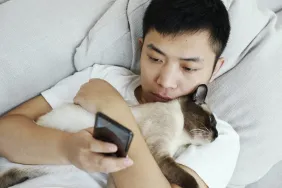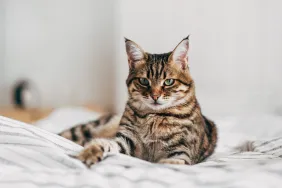Cats often receive criticism for appearing distant or unemotional. Unlike dogs, they generally have a more understated way of expressing themselves — perhaps just with a simple twitch of the ear or curl of the whiskers. Very few studies have tried to unravel the complex emotional lives of these animals. However, researchers have now found that cats communicate with each other using nearly 300 unique facial expressions, as per a study published in the Behavioral Processes journal in October.
How researchers uncovered the truth about cats’ facial expressions
Daniel Mills is a veterinary behaviorist at the University of Lincoln. While he was not part of the study, Mills contends that many people mistakenly believe cats are primarily unsocial animals. He noted, “There is clearly a lot going on that we are not aware of.”
To gather data on these feline subjects, researcher Lauren Scott from the University of Kansas Medical Center spent approximately a year observing interactions among 53 adult domestic shorthair cats at a cat café in Los Angeles. This group consisted of both males and females, as outlined in the study.
Scott collected a total of 194 minutes of feline footage, capturing 186 interactions. In collaboration with her co-author — evolutionary psychologist Brittany N. Florkiewicz from Lyon College — she examined the cats’ facial cues.
Their analysis revealed a remarkable 276 unique expressions, formed through a combination of 26 facial movements. Among them, these included changes in ear position, blinks, nose licks, and whisker and mouth motions. By comparison, humans mainly have around 44 facial movements, while dogs possess 27. Among these feline expressions, about 45 percent (126) were classified as friendly, 37 percent as aggressive, and 18 percent as ambiguous, as reported by Jennifer Nalewicki from Live Science.
“These findings show it is good to look at a cat’s ears, eyes and whiskers to understand if they are feeling friendly,” Florkiewicz explains to Andrei Ionescu of Earth.com. “Their mouth provides a lot of information about whether a cat fight is likely.” She continued, “People may think that cats’ facial expressions are all about warning other cats and people off, but this shows just how social and tolerant pet cats can actually be.”
What these findings mean for the future
Although the study provides fresh insights into feline emotions and behaviors, the team was unable to precisely decipher the meaning behind each expression. As Florkiewicz explained to Hafsa Khalil of CNN, further research could delve into this aspect.
Nonetheless, the scientists did identify certain repeated patterns. During friendly interactions, cats usually direct their ears and whiskers toward one another. Contrastingly, while in less amicable encounters, cats tended to move these features away. In confrontations marked by hostility, the animals often displayed constricted pupils and retracted ears.
The findings from this new study have the potential to help individuals adopt cats who are more likely to connect with their existing pets. Additionally, it could enhance pet owners’ understanding of their furry friends. There’s even the possibility of developing an app in the future that decodes cat facial expressions. According to Live Science, there are companies already expressing interest in this concept.
Florkiewicz further notes the complexity of cat communication, stating, “Our study demonstrates that cat communication is more complex than previously assumed.” She added, “Our hope is to expand our sample size to include cats living in other locations.” In particular, she hopes to “[look] at the facial expressions of cats living in multi-cat homes, feral colonies.”









